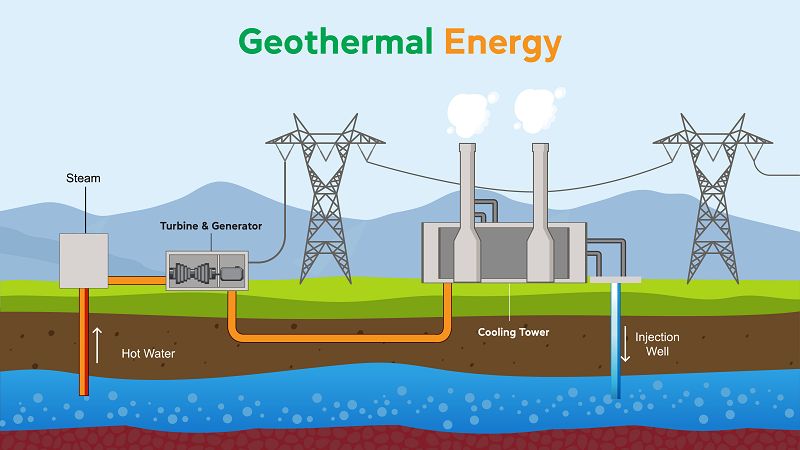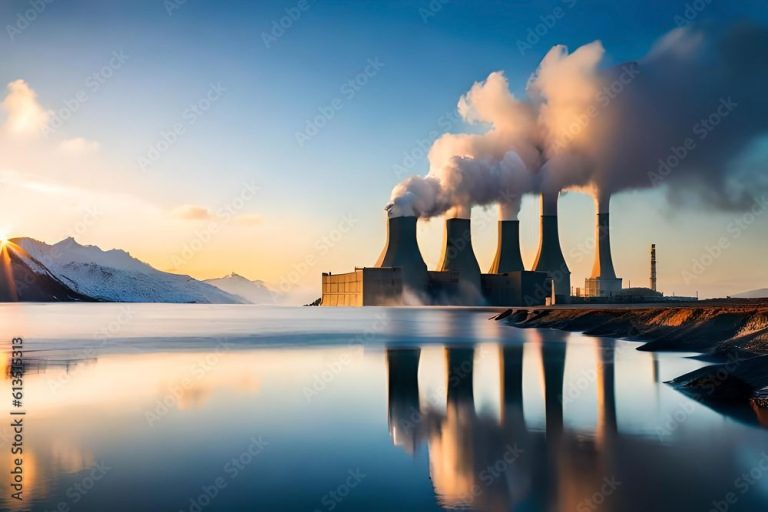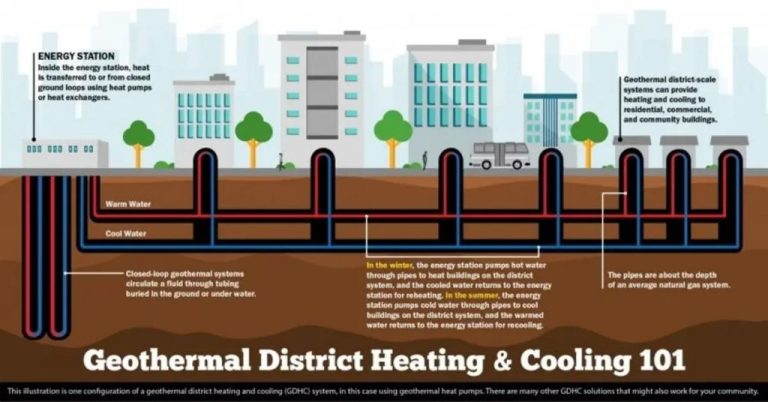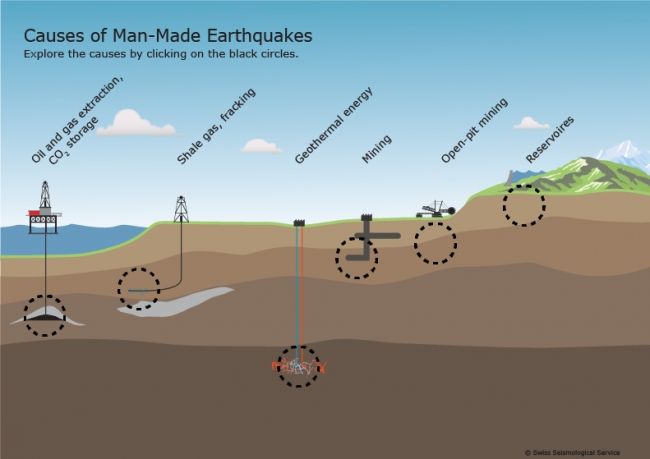What Are Geothermal Renewable Resources Examples?

Introduction to Geothermal Energy
Geothermal energy is heat derived from the natural heat of the earth’s interior originating from the time the planet was formed. It arises from the radioactive decay of minerals, from volcanic activity, and from solar energy absorbed at the surface. This heat energy can be tapped into and utilized in various ways including the generation of electricity. Geothermal power plants convert geothermal energy into electricity using steam produced from reservoirs of hot water found a couple of miles or more below the Earth’s surface. The steam rotates a turbine that activates a generator, which produces electricity. After being used to generate electricity, the steam is returned to the reservoir to be reheated in a closed loop system. This makes geothermal power a renewable and sustainable energy source.
Some key facts about geothermal energy:
- Accessible nearly everywhere, with sufficient depth
- Emits little to no greenhouse gases
- Does not rely on sun or wind like solar and wind power
- Available 24/7 as a baseload source unlike solar/wind
- Environmentally friendly
- Renewable energy source
Sources:
[1] https://www.eia.gov/energyexplained/geothermal/
[2] https://www.energy.gov/eere/geothermal/geothermal-basics
Types of Geothermal Resources
There are four main types of geothermal resources that can be used for energy production:
Hydrothermal
Hydrothermal resources involve natural underground reservoirs of steam or hot water. The steam can be used directly to generate electricity in a dry steam power plant. Hot water that flashes into steam when pressure drops can be used in a flash steam power plant 1. Hydrothermal resources are currently the most commonly used for geothermal power generation.
Geopressured
Geopressured resources consist of water or brine mixed with methane gas trapped under high pressure. The methane can be extracted and burned to generate electricity. The hot water can also be used for direct heating applications or electricity generation 2.
Magma
Magma resources involve tapping directly into molten rock or magma chambers deep below the earth’s surface. This very high temperature source could theoretically be used to drive advanced power generation systems, but the technology is still in early research and development stages.
Enhanced Geothermal Systems (EGS)
EGS, also known as engineered geothermal systems, create reservoirs in hot dry rock through hydraulic fracturing. Water is pumped into the fractures, heated, and brought back up to the surface where the energy is extracted. EGS expands the potential locations for geothermal energy beyond conventional hydrothermal resources 3.
Direct Uses of Geothermal Energy
One of the most common direct uses of geothermal energy is for heating buildings. Geothermal heat pumps can tap into subsurface waters to efficiently heat and cool buildings. This geothermal system pumps water or antifreeze solution through pipes buried underground to transfer heat between the building and earth.1 The stable temperatures underground make geothermal heat pumps highly energy-efficient for heating and cooling.
Geothermal energy is also widely used for heating greenhouses. Greenhouse heating takes advantage of hot water from geothermal reservoirs near the earth’s surface. Pipes run underneath greenhouses to regulate temperatures for optimal plant growth. The direct use of geothermal heat allows greenhouses to be constructed in otherwise unsuitable cooler climates and helps lower operating costs.2
In addition, geothermal energy can be used for aquaculture applications such as raising fish, shrimp, and alligators. Heated water from geothermal reservoirs is channeled through aquaculture ponds to achieve optimum temperatures for aquatic species to thrive.3 This direct use of geothermal systems allows aquaculture facilities to be located in a broader range of climates.
Electricity Generation
Geothermal power plants generate electricity by extracting heat from underground reservoirs of hot water or steam. There are three main types of geothermal power plants: flash steam, dry steam, and binary cycle. Flash steam power plants are the most common and use water at temperatures above 360°F (182°C). The hot water is sprayed into a tank held at a much lower pressure, causing some of the fluid to rapidly vaporize or “flash.” The resulting steam then turns a turbine which spins a generator to produce electricity.
In dry steam power plants, steam from underground is piped directly into a turbine to spin the generator. This type only works in locations with naturally occurring dry steam reservoirs. Finally, binary cycle power plants transfer the heat from hot water to another liquid which has a much lower boiling point. The liquid vaporizes, spinning a turbine to generate electricity. Binary cycle plants can operate even using lower temperature reservoirs down to 225–360°F (107–182°C).
Geothermal Heat Pumps
Geothermal heat pumps use the constant temperatures underground as a means of heating and cooling buildings efficiently. They take advantage of the fact that the Earth’s temperature below 6 feet remains at a near-constant 50-60°F throughout the year1. During the winter, the heat pump removes heat from the Earth and pumps it into the building. During the summer, the process is reversed and the heat pump moves heat from the building back into the ground2.
There are two types of geothermal heat pump systems used for residential and commercial applications:
Vertical Loops: These systems use pipes buried underground vertically, usually below the frost line. Holes are drilled into the ground, and U-shaped pipes are inserted into the holes. A conductive filler material like grout is used to fill the spaces.
Horizontal Loops: These systems use pipes buried underneath the ground horizontally in trenches. Horizontal loops are generally more cost-effective for residential systems but require adequate land space.
Compared to traditional heating and cooling systems, geothermal heat pumps can reduce energy use by up to 60%. Despite higher upfront costs, they provide great return on investment over their lifespan of 15-30 years1.
Major Geothermal Power Producers
Some of the top countries leading in geothermal power generation capacity are:
The United States is the world’s largest producer of geothermal energy with an installed capacity of over 3,900 MW as of 2023 according to ThinkGeoEnergy. Major geothermal fields are located in states like California, Nevada, Utah and Hawaii.
Indonesia ranks second in geothermal power capacity with over 2,400 MW. The country has enormous potential for geothermal development due to its location along the Pacific Ring of Fire. Some of the largest geothermal plants are located on the islands of Java, Sumatra and Sulawesi per GlobalData.
The Philippines follows as the third largest geothermal power producer with about 1,900 MW of installed capacity. Leyte and Mindanao islands host major geothermal fields feeding power plants.
Other top countries utilizing geothermal power include Turkey, New Zealand, Mexico, Italy and Iceland.
Notable Geothermal Power Plants
Some of the largest and most notable geothermal power plants in the world include:
The Geysers in California, United States is the largest geothermal power station in the world with a nameplate capacity of 1,590 MW and an annual generation of over 5 billion kWh. It consists of multiple power plants located in the Mayacamas Mountains north of San Francisco.
The Larderello geothermal power station in Italy is one of the oldest and largest geothermal power complexes in the world. It has an installed capacity of around 761 MW across multiple power plants. Larderello was the site of the world’s first geothermal power plant which opened in 1904.
The Geysers complex in California and the Larderello complex in Italy are the two largest geothermal power installations globally. Other major geothermal plants include the 815 MW Cerro Prieto plant in Mexico, the 700 MW Matsukawa plant in Japan, and the 630 MW Wairakei plant in New Zealand.
Some notable “firsts” in geothermal power plants include the first full-scale geothermal power plant at Larderello in Italy in 1904, the first modern geothermal power plant at Wairakei in New Zealand in 1958, and the first geothermal power plant in the United States at The Geysers in 1960.
Environmental Benefits
Geothermal energy has several environmental benefits compared to conventional power generation methods. Unlike coal, natural gas, and oil, geothermal energy does not directly emit greenhouse gases that contribute to climate change. The lifecycle emissions of an average geothermal plant are estimated to be just 5% of the emissions from a natural gas plant. According to the Environmental Protection Agency (EPA), geothermal power plants emit on average 99% less acid rain-causing sulfur compounds and 98% less smog-causing nitrogen oxides than comparable fossil fuel plants[1].
Geothermal energy also requires less land than other renewable resources like solar or wind. The actual power plant facilities use about the same amount of land per unit of energy produced as a coal or nuclear plant. And since geothermal reservoirs are located deep underground, the land above them can still be used for other purposes like agriculture or recreation[2].
The geothermal water itself is fully sustainable if the reservoirs are managed properly. Geothermal fields that are re-injected with the geothermal fluids extracted during energy production can maintain their productivity indefinitely. Studies of the largest geothermal field in California found no decline in productivity over nearly 50 years of operation[1]. Overall, geothermal energy is considered a renewable and sustainable resource.
Economic Benefits
Installing a geothermal system can provide significant economic benefits for homeowners and businesses. According to Forbes, the average cost to install a residential geothermal system ranges from $8,000 to $24,000. The high upfront installation cost is offset by extremely low operating costs. Geothermal systems use 25-50% less electricity than traditional heating and cooling systems. The U.S. Department of Energy estimates geothermal systems can save homeowners 30-70% on heating costs and 20-50% on cooling costs compared to conventional systems.
In addition to lower energy bills, geothermal systems provide energy independence. The systems rely on the constant temperatures of the earth and groundwater rather than fossil fuels. This insulation from fluctuating energy prices can provide great economic stability. Geothermal systems also have long operating lifespans of 20-30 years for indoor components and 50+ years for buried loops. The long lifespan and low operating costs offset the high installation costs.
Future of Geothermal
Geothermal energy has significant potential for growth in the coming years. According to research from MIT, geothermal power capacity could grow over 26-fold by 2050 with substantial investment (The Future of Geothermal Energy | MIT Energy Initiative). Enhanced geothermal systems (EGS) are particularly promising as they can unlock geothermal resources almost anywhere. EGS involves injecting fluid into hard, dry rock formations to create artificial geothermal reservoirs.
However, there are challenges to realizing this potential. High upfront costs pose barriers to geothermal development. EGS technology is still nascent and will require further research and development. There are also concerns around induced seismicity that must be carefully managed. Overall, geothermal is well-positioned to play a major role in the renewable energy transition, but it will require policy support, public and private investment, and technological innovation to overcome current limitations.




